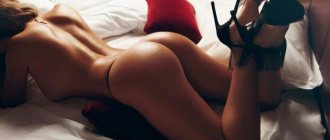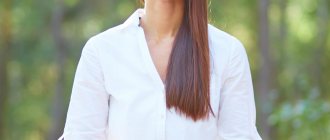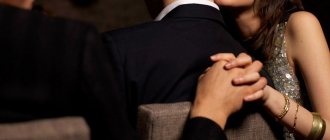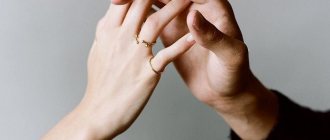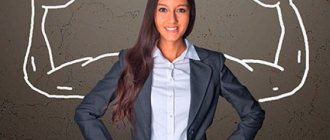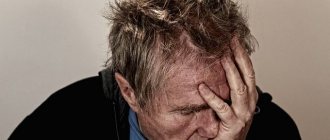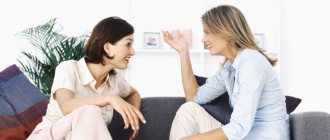Recently, it has become fashionable to use hidden meanings of colors in the interior. For example, it is believed that yellow improves mental activity - which means it is appropriate in the office, red excites - we paint the bedroom in it, and green calms and calms, so it is better for impressionable and nervous people to buy light green or emerald wallpaper.
Similar markers are used everywhere: black for funerals, white for weddings. In technical systems, red is alarm, yellow is attention, green is safety.
All this took shape over thousands of years and was interesting to ancient thinkers and doctors. This is how color therapy was born, which today is widely used in psychology, sociology, some branches of medicine and many other fields.
What it is
Color therapy is a method of alternative medicine that uses a person's exposure to variously colored light, which can cure both physical diseases and mental disorders, as well as affect mood, internal state and vital decision-making.
Despite attempts to find scientific explanations for the methods used and constant research, this direction is not officially recognized, since all experiments give too ambiguous results.
Despite the status of a pseudoscientific technique, color treatment is actively used in various fields: in reflexology, ophthalmology, pedagogy, gerontology, feng shui, psychology and psychotherapy. Some countries even have such a specialty - color therapists.
The second name of this direction is chromotherapy.
This is interesting. German psychologists, after conducting a series of studies, suggested that the shade of a sports uniform influences the decisions of judges in competitions. For several years, they analyzed the results of football matches and found that the team in the red uniform always receives fewer penalty cards and wins more often.
From the history
Ancient Egypt
IV century BC e. For the Egyptians, fruit juice was a drink of Ra, the sun god, who filled a person with positive energy. To saturate it even more, a precious stone of the same shade was placed in it and given to the sick, believing in their speedy recovery.
Persia
I century n. e. The medieval Persian scientist, philosopher, and court physician Avicenna advised his patients to choose specific colors for clothing, precious stones in jewelry, and painting walls in houses to heal the soul and body. Another interesting method in his therapy was the coloring of bath water.
Birth of Science
XIX century American August Pleasonton conducted large-scale experiments on the influence of color waves on plants, animals and people. Based on them, two other Americans, S. Pancoast and E. Babbitt, conducted additional research and concluded that color in tandem with light can be useful in the treatment of various diseases. Since then, color therapy began to develop by leaps and bounds and became popular among the people.
Ghadiali
1930s Indian scientist Ghadiali described the therapeutic effect that different color spectra have on human health. According to his theory, each organ of the body reacts sensitively to a certain shade, beginning to function more actively under its influence. It turns out that almost any disease can be cured without medications, just with color therapy.
Luscher
1950s People started talking about color therapy all over the world only after the Swiss psychologist Max Lüscher published his original color test, which is now included in almost all diagnostic methods. Over the course of several years, he conducted numerous experiments. According to the documents, he worked on 4,500 different shades and chose only 8 of them, which most clearly affect human health and psychology.
In his writings, he described in detail how people react to different colors. Red not only has a stimulating effect on the central nervous system, but also increases blood pressure and heart rate, and quickens breathing. Blue has the opposite effect. Luscher was the first to express the idea that this “language” is universal and independent of religion and nationality.
Domestic color therapy
In Russia, prominent representatives of color therapy are specialist in the field of psychodiagnostics L. N. Sobchik, psychologist I. I. Tsyganok, art therapist V. M. Elkin. The Luscher and Szondi tests were combined, the results were explained from the point of view of Pavlov’s teaching on the types of higher nervous activity, and were connected by Jung’s psychology. Methods for treating mental disorders have been developed using an integrated approach that combines color therapy and art therapy.
Interesting fact. One of the largest companies in the field of innovative and information technologies, Hewlett-Packard, conducted a study according to which text typed in green colors makes people make quick and positive decisions, and in red they doubt and make negative verdicts most often.
What to do in case of a sudden attack
If you feel the onset of a panic attack, you can prevent it using the following recommendations:
- in the first seconds, the gas balance provoked by hyperventilation should be normalized. To do this, you need to breathe into cupped palms or a paper bag;
- you need to close your eyes, relax, think about something good. It doesn’t hurt to lie down and at least take a nap;
- switch to the process that was affected by the crisis and continue to carry it out. On the street, you can start counting people passing by, solving arithmetic problems in your head, etc.;
- start singing your favorite song loudly – cheerful, energetic. The most suitable option is a children's room;
- surging heat and clouded consciousness can be cooled and cleared in the shower or by washing the face and skin behind the ears with cold water. Next, you need to look at yourself in the mirror and try to catch the moment the attack recedes;
- drink a cup of hot tea with honey and lemon balm - this soothing drink will calm you down and make you fall asleep;
- Massage your ears or palms - press the membrane between your thumb and index finger and hold it there for a count of five. Do this until the fear passes;
- chew chewing gum, which you should always have with you. The brain will switch, the numbness and excitement will go away. At this moment, you should start doing some distracting but pleasant things;
- Having auto-training skills, you can repeat to yourself - nothing bad happened, there is no danger, everything will pass very quickly.
Recommendation for those who are close to a person who is in crisis: do not be nervous, but take him by the hands and in a very calm voice convince him that everything is fine and will end well.
Why is it needed?
Each area will answer the question why color therapy is needed in its own way. For example:
- in psychology it is used for diagnostic measurements of a person’s subjective state;
- in psychotherapy - to clarify the diagnosis and treatment of mental disorders;
- in medicine - to improve the psychosomatic state of the patient;
- in ophthalmology - for the diagnosis and treatment of visual pathologies;
- in gerontology - to improve the quality of life of older people both physiologically and psychologically.
Many educational institutions and ordinary companies use color therapy as a health-saving technology. Despite its pseudoscientific nature, many people know that green is conducive to trust and calms, and has a beneficial effect on the central nervous system, which is why offices and classrooms are often painted in one of its shades. But red provokes quarrels, attacks of hypertension and tachycardia, and is too stimulating - so you are unlikely to see it in schools and kindergartens (unless it is in the softest shades).
The main tasks of color therapy:
- increasing the level of communication, emotional responsiveness;
- enrichment of sensory and emotional experience;
- formation of self-control skills;
- improving the psychological microclimate in the team;
- stimulation of intellectual activity;
- creating a special mood;
- psychophysical relaxation, reduction of emotional, mental and bodily stress;
- correction of psycho-emotional state;
- treatment of mental disorders and some somatic conditions.
With the world - one by one. In northern countries, where there is a catastrophic lack of light, people are saved from depression with the help of color therapy. Namely: they paint houses in bright and different shades.
Psychotherapeutic treatment
Panic attacks cannot be cured without psychotherapy using the following techniques:
1.Cognitive behavioral therapy is considered the most effective in this area - it is called the “gold standard”. The patient, with the help of a specialist, goes through several steps:
- changes your thoughts about panic to more positive ones;
- learns techniques that reduce anxiety;
- learns to overcome agoraphobia, etc.
This therapy models thinking and behavior during an attack. For example, the following situation is played out: you have a panic attack while you are driving a car. If you pull over and stop, will anything bad happen? Will you crash your car or die? Hardly! It is precisely this belief that the patient develops, and he ceases to be afraid of an attack.
2. Classic hypnosis involves putting the patient into a trance state, in which he is encouraged to get rid of panic disorder. This method shows good results, but not all people succumb to it.
3. Ericksonian hypnosis allows you to resolve internal conflicts. It is softer, since the person himself enters a trance with the help of a psychotherapist. Moreover, in this case it is believed that there are no non-hypnotizable people. In addition, the patient learns self-hypnosis, which helps him prevent panic attacks by reducing anxiety levels.
4. Body-oriented therapy is a whole set of methods that involve working with the body (by influencing it and regulating sensations, you can reduce the level of anxiety). This includes:
- breathing techniques;
- relaxation according to Jacobson.
5. Systemic family psychotherapy sees the cause of panic disorder in the family, in the relationships and disharmony existing there. That is, the patient’s condition depends on all members of his family, and therefore work is carried out with all of them.
6. Psychoanalyst sees the causes of panic attacks in unconscious conflicts - meaning feelings of guilt, problems with parents, internal aggression, etc. Therefore, the psychoanalyst will clarify these very conflicts for several years. It is this prolongation that is the disadvantage of this method.
Physiotherapeutic procedures such as:
- relaxing and tonic physical therapy;
- massage course;
- aromatherapy;
- mesodiencephalic modulation of the cerebral cortex (MDM therapy);
- electrosleep;
- color therapy.
During the course of treatment for PA, the patient may begin to doubt that it is happening correctly, that he needs psychotherapy and that it is truly successful, and that the medications have a positive effect. In addition, circumstances may turn out to be such that he violated the doctor’s recommendations and the prescribed regimen. At the same time, he may have a seizure. Therefore, the patient should not hesitate to ask for help or consult with his leading specialist. The latter will be ready at any time to answer all the patient’s questions both over the telephone and in a face-to-face meeting. Such communication, especially in the early stages, should be continuous.
help yourself
Early diagnosis and timely treatment allows you to completely get rid of panic attacks, of course, if they have become chronic. You can contribute to professional treatment at home or know how to relieve an attack and alleviate it, strengthen the body and eliminate negative factors.
The following folk remedies will help reduce fear:
- Pour 300 ml of boiling water over a teaspoon of dry oregano, leave for 10 minutes, strain. Drink 150 gr. four times a day.
- 100 gr. pour 500 ml of boiled water into young birch leaves. After infusion, strain for five hours. Take 100 ml every day.
- Infusion of linden or chamomile. Pour boiling water (a glass) over a teaspoon of dried inflorescences and after half an hour you can drink it as tea, having first strained it.
Motherwort juice is also good; alcohol tincture of oregano; decoctions of lemon balm and mint; infusions of valerian, wormwood, nettle, hops.
You can help an upset psyche by walking on grass or bare ground with bare feet (even in the cold season) - this calms you down.
Aromatherapy gives excellent results - candles with essential oils of pine, eucalyptus, juniper. A massage with these substances won't hurt either.
Experts advise drinking as little strong tea and coffee as possible, sitting less at the computer and in front of the TV, walking more in the fresh air, playing sports and being physically active. The day should be distributed correctly between time for work, rest and sleep. You need to monitor your diet - it should be rational and not contain spicy seasonings. Avoid bad habits (smoking, alcohol), take vitamins.
Those susceptible to panic attacks should adhere to the following rules:
- Don't be alone, don't isolate yourself. Communicate with family and friends, tell them about your condition - they will help you cope with it. Keep a diary, share your thoughts with him, analyze them, tune in to something pleasant.
- Relax more often - read, spend time in nature, watch a fun movie, take a bath, listen to good relaxing music, that is, have a good rest. You can learn to meditate and do it at home, in silence, in a calm environment.
- Learn to breathe correctly, master a breathing technique that reduces hyperventilation of the lungs and thus alleviates panic symptoms - through a paper or plastic bag. An excellent option is Pilates, that is, breathing exercises. Sign up for the section and practice it under the guidance of an experienced instructor.
- Gradually, with the help of training the nervous system, develop immunity to stress, do not engage in self-hypnosis of fear of anything, do not scold yourself.
- If the situation gets out of control, immediately contact a specialist.
- Set yourself up for positivity. When anxious thoughts appear, try to switch to something good.
Indications
Color therapy is used in the treatment of diseases of mental and somatic origin. The indications are:
- migraine;
- insomnia, nightmares;
- asthenia;
- allergies, skin diseases;
- weakened immune system;
- rehabilitation after prolonged illnesses and operations;
- nervous tics;
- pathologies of the visual system;
- enuresis, constipation;
- anorexia, bulimia and other eating disorders;
- personality and behavior disorders;
- interpersonal conflicts, social maladjustment, deviant behavior.
Color therapy is offered to patients of health centers, sanatoriums, sports institutions, and psychological relief rooms. Most often it is used by psychologists to relieve stress. It is enough to sit in a green room and drink tea from a green mug, and anxiety and tension noticeably weaken.
Did you know that... color therapy can cure a child from enuresis? To do this, it is recommended to draw only with pencils and felt-tip pens, removing everything that spreads (paint, gouache, water), and replacing the yellow color of moisture with brown - an indicator of dryness.
Indications for color pulse therapy
Regular health-improving sessions of color pulse therapy provide a pronounced effect in the treatment of myopia, farsightedness, computer syndrome, the initial stages of cataracts and glaucoma. That is, the direct indications for prescribing this procedure are:
- Computer syndrome;
- Spasm of accommodation;
- Dystrophic changes in optic nerve fibers;
- Age-related macular degeneration;
- Amblyopia, presbyopia;
- Myopia and farsightedness of varying degrees;
- Astigmatism;
- Glaucoma and cataracts (initial stages).
In addition, with regular visual color stimulation, psycho-emotional correction and improvement of brain function are ensured. Stress is relieved, emotional state improves, sleep normalizes. Color pulse effects bring a feeling of relaxation and comfort, elevate mood, improve concentration, learning and performance.
Meaning of colors
In psychology and psychotherapy
White
Sets you in a positive mood. Expresses a kind attitude. Stores energy. It lifts your spirits.
Turquoise
Calms, gives confidence, refreshes, relieves irritation, fatigue, stress. Improves mood. Helps you find the right words and make contacts. It is chosen by people with a rich imagination, but a complex character.
Blue
Calls for patience and tolerance. Provokes passivity. Helps improve intellectual abilities. Contraindicated for manipulators.
Yellow
Clears negative emotions. Promotes the manifestation of the creative component. Activates mental activity. Instills confidence and perseverance before important events and decisions. Contraindicated for overly excited people.
Green
Calms, calms, relaxes, helps to achieve inner harmony. Inspires optimism. Contraindicated for those who are lethargic and indecisive.
Brown
Promotes physical and psychological stability. Relaxes. Inspires career growth.
Red
Excites, invigorates, tones the nervous system, warms. May cause an emotional explosion. Instills self-confidence. Structures emotions and thoughts. Contraindicated for aggressors.
Orange
Gives strength and energy. It is chosen by positive and purposeful people. Contraindicated for lazy people and narcissists.
Pink
Relaxes, puts you in a romantic mood. Used in the treatment of depressive conditions.
Blue
Relieves worries, nervous tension, obsessive thoughts. Promotes the development of intuition. Pain reliever both physiologically and mentally. Helps fight addictions. Contraindicated for seasonal depression.
Lilac
Allows you to penetrate into the subconscious and understand yourself. Provokes sensuality.
Violet
It puts you in a philosophical mood, awakens the desire to speculate about the frailty of existence, and instills wise thoughts. Arrogant people choose him. Contraindicated for alcoholics and severe mental disorders.
Black
Helps you concentrate. Improves thought processes. Exacerbates depression.
In medicine
- White - excretory systems of the body, nervous system;
- turquoise - leather;
- blue - body temperature, blood pressure, infections, muscular system, appetite, genitourinary system;
- yellow - digestion, solar plexus, central nervous system, vitality, brain;
- green - cardiovascular system, healthy sleep, vision, lungs;
- red - blood circulation, metabolism, immunity;
- orange - endocrine glands, respiration, reproductive system, hormonal levels;
- pink - heart;
- blue - endocrine system, musculoskeletal system (treats rheumatism), throat (helps cope with sore throat);
- purple - blood, bone tissue, thyroid gland.
Holographic color therapy
A popular branch of general color therapy. According to it, a person’s health, body, behavior, emotions and feelings are controlled by the energy-information field - the aura. To change your life for the better, it is enough to influence it with the language of flowers:
- blue (Vishuddha chakra) - speech, frankness, sincerity, trust;
- yellow (Manipura chakra) - digestion, metabolism, vigor, good mood;
- green (Anahata chakra) - color of the soul, liberation from grievances, forgiveness;
- red (Muladhara chakra) - desire to live, self-confidence;
- orange (Svadhisthana chakra) - harmony in relationships, rejuvenation, attractiveness to the opposite sex;
- blue (Ajna chakra) - self-confidence, intuitive thinking;
- violet (Sahasrara chakra) - connection with the Cosmos, intuition, comprehension of the essence of things, insight.
The main scientific and practical center of holographic color therapy is located in Israel.
Types and causes of the disease
There are quite a lot of people in the world who are susceptible to panic attacks - up to 5% (most of them are women between 20 and 30 years old).
There are 3 types of panic attacks:
- spontaneous – sudden, appears without any obvious reason;
- situational - occurs in anticipation of a certain situation or directly during its course (before an exam, in anticipation of a conflict or directly during its course, etc.);
- conditional-situational - the impetus is a biological or chemical activator (change in hormonal levels, ingestion of alcoholic beverages, drugs, alcohol.
The following factors contribute to the occurrence of panic attacks:
- Genetic predisposition, that is, the disorder is transmitted with genes. In this case, it will be very difficult to cope with it and will take a long time.
- The presence of phobias, that is, fear of something.
- Poor monotonous diet, lack of vitamin B in the body.
- Significant event (wedding, birth of a child, death of a loved one, etc.)
- Certain diseases, inflammatory processes, hypoglycemia (low blood sugar), hyperthyroidism (activation of thyroid function), post-traumatic syndrome.
- Self-doubt, personal problems, failures in life.
- Having bad habits.
- Wrong lifestyle.
- Internal conflict.
- Depression.
- Taking strong antibiotics that have multiple side effects or are addictive.
- Withdrawal syndrome – refusal of alcohol. Such “withdrawal” often leads to nervous breakdowns and excessive anxiety.
- Hyperventilation syndrome from the habit of breathing deeply - this disrupts the balance of carbon and oxygen, which leads to the consequences mentioned above.
- Taking stimulants or narcotics, caffeine, antidepressants, or medications the simultaneous use of which is undesirable.
- Serious cardiovascular diseases that can lead to death. The person realizes this and at the slightest deterioration of the condition begins to panic.
- Consequences of very high physical or sports activities.
- Hormonal changes in the female body - pregnancy, before menstruation, menopause.
Methods
There are different methods of color therapy that are used both by professionals in psychology, psychotherapy, medicine, and by ordinary people at home:
- color diagnostic tests;
- concentration on one color that has a special effect on the patient;
- color lithotherapy - selection of stones of the appropriate shade to eliminate anxiety and restore internal balance;
- Feng Shui: selection of shades for the interior of the house and offices;
- fashion industry: wearing clothes in appropriate colors;
- dietetics: table setting in the right color scheme (which stimulates or suppresses appetite);
- charged water: a jar of water is wrapped in paper of a certain color and placed in sunlight for several hours.
In kindergartens, color therapy actively uses such a method as coloring, which all children love. Firstly, this is a kind of diagnostic that allows you to monitor the child’s mental state. Secondly, by adjusting the drawing tools (pencils or felt-tip pens, gouache or crayons, gel pens or watercolors) and the suggested shades, you can help your child overcome many difficulties.
How to use color therapy?
One way to put color therapy into practice is to choose a color that gives you the energy you need and begin to “absorb” it in various ways. For example:
- by eating foods of the color you want;
- wear clothes and jewelry of this color;
- drink drinks from colored glass bottles;
- take baths with the addition of aromatic oils and other products of a certain color;
- visualize images of the required color.
The most universal effect of color therapy can be observed by taking baths with additives of the desired color. This way you can have an optimal impact on both your physical and mental state.
Devices
Despite the lack of recognition by official medicine, color therapy is actively used in health institutions. All kinds of medical devices are created and used that affect individual organs with a certain tint spectrum.
Glasses
Equipped with pulse emitters. They transform rhythmically pulsating light into brain structures, improving the bioelectrical activity of neurons and functional systems of the body. They have a wide range of applications.
ATsL-01-Strela, ATsT-02-M, ATsT-03-M
Devices used in ophthalmology. Improves visual functions. Good for the eyes.
Bioptron
A device used in physiotherapy and reflexology. It is a lamp that emits polarized light of a certain color spectrum. It is directed to the painful part of the body, stimulating it.
Geska-Polycolor-Mage
Physiotherapeutic device with a magnetic attachment for color and light therapy. It affects biologically active points and zones with light of various color spectra.
The essence of the technique
The theory of color pulse therapy is based on the impact of artificial visible light pulses on the retina, the visual analyzer of the eye and indirectly on the central nervous system. The method is physiological, non-invasive, lacks allergic reactions and is highly effective.
Color pulse correction (therapy), as a method of restoring vision and preventing the development of many eye diseases, as well as visual impairments, has been widely used and recognized by ophthalmologists.
This is a specific gymnastics that strengthens the muscles of the eyeball, as well as activating the processes of metabolism and microcirculation in the tissues of the organ of vision.
Tests
In psychology, various color tests are used to determine the patient’s internal state:
- Pfister color pyramids;
- Freeling test;
- color relationship test (CRT) by Bazhin and Etkind.
But the most popular was and remains the Luscher test. Available in two versions.
Short version
Working with a table of 8 squares, painted in specific colors: gray, dark blue, blue-green, red-yellow, yellow-red, red-blue or purple, brown, black. It is most often used in psychology and pedagogy.
8 squares of Luscher dough
Full version
Working with eight color tables. It is called the “Clinical Color Test” and is used in advanced cases in psychology and in the diagnosis and treatment of mental disorders and disorders in psychotherapy.
The task facing the patient is to arrange the colors according to the degree of their subjective pleasantness in descending order.
Required conditions for conducting the test:
- natural light, but direct sunlight should not fall on the handout;
- all tables are printed on sheets of paper; they cannot be shown in the form of a presentation or on a computer;
- preliminary work is carried out with the patient: he is warned that he needs to distract himself from social stereotypes and proceed only from personal feelings.
Results:
- understanding what is really happening to a person;
- clarification of the psychotherapeutic diagnosis;
- individual personality assessment, its quick and in-depth analysis;
- recommendations on how to avoid psychological stress and improve your health (including physical).
The main criticism of the Luscher method is that its results do not coincide with the Minnesota Multidimensional Personality Inventory (better known as MMPI) by S. Hathway and D. McKinley. This test is by far the most studied, one of the most popular and widely used in clinical practice.
Color pulse therapy at MGC
At the Moscow Eye Clinic, specialists have developed and successfully used special color pulse vision therapy programs. The procedures are carried out using the most modern equipment (including Visotronic M, Speckle M, Monobinoscope devices) in combination with drug therapy, and can be prescribed to both adults and young patients. Upon completion of the necessary diagnostic studies, an individual hardware treatment regimen is selected for each patient, which is adjusted if necessary in accordance with the current results. Color pulse therapy sessions are carried out under the supervision of highly qualified specialists, do not cause pain or discomfort, and do not require the patient to limit his usual lifestyle.
In the medical department, everyone can undergo examination using the most modern diagnostic equipment, and based on the results, receive advice from a highly qualified specialist. The clinic provides consultations to children from 4 years old. We are open seven days a week and work daily from 9 a.m. to 9 p.m. Our specialists will help identify the cause of vision loss and provide competent treatment for identified pathologies.
You can find out the cost of a particular procedure or make an appointment at the Moscow Eye Clinic by calling 8 and 8 (499) 322-36-36 (daily from 9:00 to 21:00) or using the online registration form .
Application in practice
Color therapy is a universal technique that has no age restrictions. In psychology, it is used for children, adults and the elderly.
For children
Color therapy is actively used in kindergartens and schools in order to clarify the child’s problems related to social adaptation and personality development. At the first stage, he is provided with a list of basic vital priorities, which are selected individually for his age.
List for preschool children:
- Mother;
- dad;
- stepfather;
- teacher;
- Brother;
- sister;
- grandmother;
- grandfather;
- neighbours;
- toys, etc.
List for children 7-11 years old:
- parents;
- Friends;
- a pet;
- hobby;
- study, etc.
List for teenagers:
- family;
- money;
- studies;
- Friends;
- recognition in society;
- University admission;
- work, etc.
How is diagnosis carried out:
- The child places the concepts from the list in places depending on the degree of their importance for him personally.
- 8 squares from a short version of the Luscher color test are laid out in front of the child.
- The child selects the appropriate color for each word from the list, based on his personal preferences. Shades can be repeated, there are no restrictions.
- The child’s choice is recorded in the protocol.
- A half-hour rest is organized (lunch, games, distracted communication).
- Again, 8 Luscher squares are laid out. The child makes a list of them from the most pleasant to the least favorite.
When processing the results, conclusions are drawn about whether the two lists compiled by the child - conceptual and color - coincide. It is believed that the first is built under the influence and pressure of society (students can write in the first place parents whom they are afraid of, or school, which they may hate because of the forced obligation to go to it), and the second - based on a true personal attitude to these concepts .
Thus, color therapy helps to understand what is really happening to the child. Based on this, psychologists working in kindergartens and schools build training programs with the most problematic children.
For children with disabilities
There are projects on the use of color therapy to work with children with disabilities. They are based on the assumptions that certain colors are transmitted through the brain:
- normalize muscle tone;
- neutralizes negative emotions;
- improve intellectual abilities;
- develop communication skills;
- improve speech, hearing and the musculoskeletal system.
Within the framework of these projects, group techniques are used in working with children with disabilities:
- "Magic colors". Mixing them and getting a new shade.
- "Magic Bedspreads" The child and the teacher cover themselves with a bright orange scarf, which improves their mood, sit huddled together, holding hands, looking into each other’s eyes.
- “Color fairy tales”: blue, green, white, yellow, etc.
The effectiveness of such programs has not been scientifically proven.
For the elderly
The “All Colors of Life” program, developed on the basis of color therapy for elderly citizens and the disabled, is being actively implemented in nursing homes and sanatoriums. Her tasks:
- formation of motivation to maintain health;
- psychological support through training in new healing techniques;
- sociocultural rehabilitation.
During the implementation of the program, the following color therapy techniques are used:
- color shower;
- colored baths;
- color bar (charged drinks);
- culinary color therapy;
- active creative activity.
The methods of “Color diagnostics of emotional states” and “Color sociometry”, Luscher test are used.
Color therapy as a means of correcting the psycho-emotional state of children
Ekaterina Abalmasova
Color therapy as a means of correcting the psycho-emotional state of children
Today, in preschool institutions, much attention is paid to health-saving technologies, which are aimed at solving the priority task of preschool education - to preserve, support and enrich the health of children .
Preschool age is a decisive stage in the formation of the foundation of a child’s physical and mental health . During this period, there is intensive development of organs and the formation of functional systems of the body. Recently, the number of children attending preschool institutions with various psycho-emotional disorders : decreased performance, irritability and tearfulness, as well as hyperactive and vice versa passive children. Thus, it has become necessary to study modern methods for strengthening and preserving children's health.
A child's emotional and physical well-being depends on his environment. This is not only a subject-developing environment , but also we are adults.
It is we who must create all the conditions for the development of a versatile personality.
Play is the main activity of a preschool child. In play, the child develops, learns about the world around him, and gains experience.
One of the main requirements for the selection of material is color , since in terms of its effect on the human body it is of enormous importance. Color serves as a powerful stimulator for the emotional and intellectual development of children . It must be taken into account that preschool childhood is also a period of intense sensory development. A child and color are interconnected things. After all, children by their nature are more susceptible to the diversity of our world and especially urgently need it. All this prompted me to use one of means - color therapy .
Color therapy is the correction of a child’s psycho-emotional state using certain colors . Thanks to the effect of a certain color on a child, you can achieve significant results in overcoming apathy, irritability, excessive activity and even incipient childhood aggression, and the ability to manage your emotions.
Even in ancient times, people noticed that the color of clothing , household items, lighting, etc. can influence a person’s physical and psychological state . Color was used to heal in Ancient Egypt, China, India, and Persia. Modern science has confirmed the healing properties of flowers . Based on research into their influence, color therapy - a technique for improving human health with the help of color .
was the first to discover the positive and negative influence of color on the human psyche, thus laying the foundations of modern color therapy . He Fr.
V. Bekhterev argued: “A skillfully selected range of colors can have a beneficial effect on the nervous system better than some mixtures.”
American psychologist Jacob Lieberman , who spent thirty years studying the effect of light and colored rays on the human body, came to the conclusion that color and sunlight can replace almost all medications!
Now a whole scientific theory has emerged about the influence of colors on the psychophysiological state of a person .
“ color methods ” in psychodiagnostics
, allowing you
to create a portrait of a person , determine his current , etc. “Show me your favorite colors and I’ll tell you who you are,” said the outstanding Swiss doctor and psychologist Max Lüscher , developing the famous color personality test .
Surely, each of us has seen a rainbow at least once and can easily name the colors of the rainbow in order . to remember the colors of the rainbow in order back in childhood. Remember the famous phrase: Every Hunter Wants to Know Where the Pheasant Sits? But this is nothing more than the most popular mnemonic phrase for remembering the colors of the rainbow in order . The first letter of each word in this phrase corresponds to the first letter of the color . Let's take a closer look at each color :
Red color
In color therapy, this color is used when a person’s vitality needs support or restoration, when it is necessary to fill a weakened body with new strength. Red sometimes helps combat severe stress. However, for overly emotional people, red in large quantities can be harmful.
Orange color
Promotes overall strengthening of the body, normalizes the activity of the endocrine system. This color gives a feeling of psychological freedom and reduces emotional instability. Orange improves digestion and increases appetite.
Yellow _
It will help with a sad mood and constant passivity. It helps you learn to relate to events more easily and get rid of useless worries. This color has a positive effect primarily on people who are melancholic, prone to internal conflicts and passivity, and have communication problems.
Green color
Long-term exposure to this color makes the character balanced, at the same time refreshing and calming. This color increases vitality and promotes relaxation, and helps fight sleep disorders.
Green promotes stable growth of mental performance and concentration. This color helps fight excess weight and reduces appetite.
Blue _
Expresses lightness, freshness and weightlessness. It can have a relaxing and calming effect on psyche At the end of a hard day at work, a blue tint in the room can relieve stress, but do not forget that too much blue in the room can cause a feeling of alienation and coldness.
Blue color
Psychologists recommend blue color to people who need a sense of security. It creates a positive psychotherapeutic effect in melancholy, hysteria, and epilepsy. Shades of blue help with insomnia.
Blue color relieves pain in diseases of the skeletal and endocrine systems; it is recommended for diseases of the spine, brain, eyes, and inflammation of the sinuses. It is believed that this color is associated with spirituality and can inspire.
Purple _
It should be used when groundless doubts, mistrust, and suspicion arise. Thanks to its strong effect on the subconscious, violet helps fight deep-seated fears and various mental and nervous disorders.
Excessive influence of violet depresses the nervous system and can cause apathy.
White color
A symbol of purity and spirituality, healing from illnesses, it is the color of balance , goodness, and success. It will help you calm down and relieve internal tension. White color heals the central nervous system, helps restore the structure of brain tissue directly related to consciousness.
Black color
This color promotes composure, discipline, endurance and perseverance. But those prone to depression are not recommended to wear black, because in excess this color can suppress .
Color therapy for children involves first identifying their favorite color , and then filling as much of the space that surrounds it as possible color
What colors do children usually choose? They choose bright, saturated colors - red , yellow, green. This indicates that children are developing normally, they are interested in everything new, bright, they are dynamic and inquisitive. But the favorite white or black colors can tell that the child is withdrawn and prefers loneliness. Color therapy is precisely aimed at returning the child to the happy, bright world of childhood and joy.
In order to properly influence a child, you must first teach him to perceive and feel color , i.e., cultivate a culture of color .
Young children are very receptive and impressionable; they require special care. Therefore, try to create the most comfortable environment in the group. First of all, this concerns the interior of the group, where the child spends a lot of time. Preference is given to warm colors of the group room. Children in kindergarten constantly feel the impact of a confined space, so they also need to zone the room using color .
In addition, children in the group are surrounded by a variety of bright and colorful didactic material, to which children have free access and can use it independently.
In my practice color therapy in various forms of work. Let’s look at some of them in more detail:
Didactic game " Colored sticks "
.
Children are invited to lay out the provided sample or a design from colored In this game, children learn to interact with each other, they communicate. They consolidate the acquired knowledge about geometric shapes, colors , focus on planes, develop fine motor skills and logical thinking.
Didactic game " Colored pieces of glass "
.
Through colored glass pieces made of transparent plastic in saturated and pastel colors we look at the surrounding space. This gives a tangible therapeutic effect and develops color associations , calms, puts you in a positive mood, develops imagination and fantasy. Changing the color space effectively affects the emotional state of the baby . Direct eye-to-eye
, holding hands, in a closed but unusual space, cut off from the rest of the environment, a quiet conversation on any topic, depending on the situation!
I also made the equipment “Rainbow Rain”
.
Satin ribbons flow down like streams of water; It’s nice to touch them, move them, touch them with your face, walk through them. Children after visiting “Rainbow Rain”
become calmer and more relaxed.
Emotional stress is relieved. behind the “streams”
of ribbons, which is especially suitable for introverted
children .
Such equipment can be made in a corner of privacy for zoning, or you can make it mobile. The next form of work: reading and writing fiction - “ Colored Fairy Tales ”
.
-Do you want me to tell you seven fairy tales?
- What will they be like?
-One is yellow, the other is green, then blue, then red, still blue and purple, orange, and the last one is multi-colored about a girl who had a multi-colored raincoat and she went out into the street, during her walk she met multi-colored objects . Reading such fairy tales activates logic, reduces emotional instability, and develops imagination.
Writing colorful fairy tales , both in a group and at home with parents. It is clear that bright fairy tales, for example, yellow and red, green and orange, turn out to be cheerful and colorful, but black is the opposite. But even black paint can be transformed by adding a little color and imagination .
Another form of work is a light table, which helps children relax, develops imagination and imagination. Sand therapy, drawing on colored rice , and mixing colors using “ colored glass ”
, we draw using stencils on a light tablet.
Also, to correct the psycho-emotional state of children in my work, I use unconventional drawing methods: threads, blots, soap bubbles, finger painting and many others. At the moment of drawing their emotions, the child gets rid of fears, is charged with positive emotions, and becomes more liberated.
Another way to develop tactile sensations, fine motor skills, hand coordination and, of course, color therapy is Marbles pebbles.
With their help, you can also carry out various didactic games:
“Show your emotion”
,
“
Colorful stones ” ,
“Lay out along the contour”
,
“Patches”
.
And in conclusion, I would like to share another didactic game “Magic Bags”
.
I prepared colorful bags that the children filled with magic words and shared positive emotions and happy moments from their lives. For sad stories and bad moods, we have a certain color bag that neutralizes these emotions.
And there is a bag that grants one wish a day, the children must collectively decide what kind of wish it will be. Something that can be fulfilled by a teacher or a wish for parents. Desire is not related to the acquisition of something, but rather to the development of relationships. This could be a game, reading a book, conversation, hugs. Of course, it’s too early to talk about the results of the work, but it can already be noted that the children have become more emotionally relaxed. They try to give a color description of the fairy-tale hero and his actions, the weather we observe while walking. Children know well and begin to feel colors and shades . This is very noticeable in their drawings.
I also selected consultations for parents aimed at expanding their knowledge about the advisability of developing children’s color perception , about various drawing techniques, color psychology and a selection of color games .
Our group also conducts various experiments with color . They sculpt from colored dough , play with kinetic colored sand , make buildings from , etc. d.
Direct contact in games and creative activities with children helped to establish trusting relationships, it is possible to correct children’s behavior , their mood, emotional state , and create a favorable psychological climate in the children’s team. All this ultimately has a beneficial effect on the mental and physical health of children .
